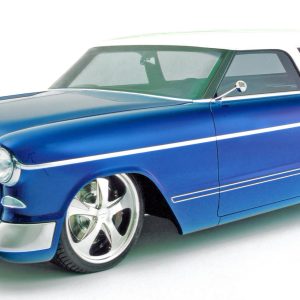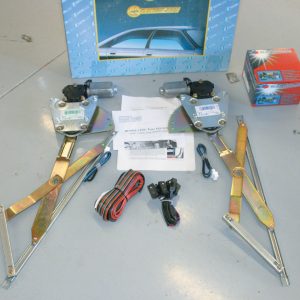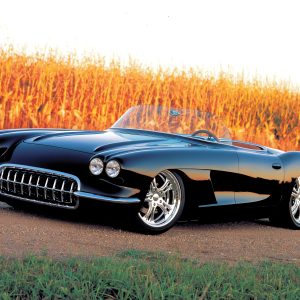


THE AUTO BUILDER
Featured
- All Post
- 20 High Priority - SR Super Rod
- Builds
- 25 High Priority - FB Ford Builder
- Cars
- 30 High Priority - AR American Rodder
- 01 Post Status
- 35 High Priority - RD Rodders Digest
- 40 High Priority - OTR On the Road
- 45 High Priority - SRB Street Rod Builder
- 50 High Priority - TB Truck Builder
- 55 High Priority - BSCENE Buckaroo Scene
- 60 High Priority - FPB Family Power Boat
- Trucks
- Swaps
- Performance Boats
- _000 Home Sliders
- Builders
- 00 Sidebars
- Manufacturers
- 05 High Priority - HCI Hot Compact Imports
- 05 Publications
- 10 High Priority - CR Chevy Rumble
- Back
- Chassis
- Engine
- Fuel System
- Electrical
- Exhaust
- Transmission / Drivetrain
- Suspension
- Steering
- Brakes
- Wheels and Tires
- Interior
- Exterior
- Accessories
- Power Adders
- Back
- Chassis
- Engine
- Fuel System
- Electrical
- Exhaust
- Transmission / Drivetrain
- Suspension
- Steering
- Brakes
- Wheels and Tires
- Interior
- Exterior
- Accessories
- Power Adders
- Back
- Chassis
- Engine
- Electrical
- Exhaust
- Fuel System
- Transmission / Drivetrain
- Suspension
- Steering
- Brakes
- Wheels and Tires
- Interior
- Exterior
- Accessories
- Power Adders
- Back
- Chassis
- Engine
- Electrical
- Exhaust
- Fuel System
- Transmission / Drivetrain
- Suspension
- Steering
- Brakes
- Wheels and Tires
- Interior
- Exterior
- Accessories
- Power Adders
- Back
- Chassis
- Engine
- Fuel System
- Electrical
- Exhaust
- Transmission / Drivetrain
- Suspension
- Steering
- Brakes
- Wheels and Tires
- Interior
- Exterior
- Accessories
- Power Adders
- Back
- Chassis
- Engine
- Fuel System
- Electrical
- Exhaust
- Transmission / Drivetrain
- Suspension
- Steering
- Brakes
- Wheels and Tires
- Interior
- Exterior
- Accessories
- Power Adders
- Back
- Chassis
- Engine
- Fuel System
- Electrical
- Exhaust
- Transmission / Drivetrain
- Suspension
- Steering
- Brakes
- Wheels and Tires
- Interior
- Exterior
- Accessories
- Power Adders
- Back
- Engine
- Fuel System
- Electrical
- Outdrives
- Steering
- Interior
- Accessories
- Power Adders
- Exterior and Hull
- Back
- Chassis
- Engine
- Electrical
- Exhaust
- Fuel System
- Transmission / Drivetrain
- Suspension
- Steering
- Brakes
- Wheels and Tires
- Interior
- Exterior
- Accessories
- Power Adders
- Back
- Chevrolet
- Cadillac
- Pontiac
- AMC
- Buick
- Jeep
- Lincoln
- Ford
- Honda
- GMC
- BMW
- Mitsubishi
- Dodge
- Nissan
- Chrysler
- Subaru
- Toyota
- Plymouth
- Mercury
- Volvo
- Volkswagen
- Oldsmobile
- Acura
- Back
- 05 Pub HCI Hot Compact Imports
- 15 Pub 4x4 4x4 Builder
- 20 Pub SR Super Rod
- 25 Pub FB Ford Builder
- 30 Pub AR American Rodder
- 35 Pub RD Rodders Digest
- 40 Pub OTR On the Road
- 55 Pub BSCENE Buckaroo Scene
- 10 Pub CR Chevy Rumble
- 50 Pub TB Truck Builder
- 60 Pub FPB Family Power Boat
- 45 Pub SRB Street Rod Builder
- Back
- Chip Foose
- Ring Brothers
- Jack Fuller
- Bob Cullipher
- Jerry Nichols
- Bobby Alloway
- Jesse James
- Carl Casper
- J.F. Launier
- Steve Sellers
- Boyd Coddington
- Rad Rides by Troy
- Cal Auto Creations
- George Barris
- West Coast Customs
- Back
- Street Rods
- Hot Rods
- Late Model
- Drag Race
- Handling
- Compact Cars
- Chassis
- Engine
- Fuel System
- Electrical
- Exhaust
- Transmission / Drivetrain
- Suspension
- Steering
- Brakes
- Wheels and Tires
- Interior
- Exterior
- Accessories
- Power Adders
- Chassis
- Engine
- Fuel System
- Electrical
- Exhaust
- Transmission / Drivetrain
- Suspension
- Steering
- Brakes
- Wheels and Tires
- Interior
- Exterior
- Accessories
- Power Adders
- Chassis
- Engine
- Electrical
- Exhaust
- Fuel System
- Transmission / Drivetrain
- Suspension
- Steering
- Brakes
- Wheels and Tires
- Interior
- Exterior
- Accessories
- Power Adders
- Chassis
- Engine
- Electrical
- Exhaust
- Fuel System
- Transmission / Drivetrain
- Suspension
- Steering
- Brakes
- Wheels and Tires
- Interior
- Exterior
- Accessories
- Power Adders
- Chassis
- Engine
- Electrical
- Exhaust
- Fuel System
- Transmission / Drivetrain
- Suspension
- Steering
- Brakes
- Wheels and Tires
- Interior
- Exterior
- Accessories
- Power Adders
- Chassis
- Engine
- Fuel System
- Electrical
- Exhaust
- Transmission / Drivetrain
- Suspension
- Steering
- Brakes
- Wheels and Tires
- Interior
- Exterior
- Accessories
- Power Adders
- Back
- 05 Post Imported
- 20 Post Missing Images (All)
- 25 Post Missing Images (Partial)
- 15 Post In Progress
- 30 Post Internal Review
- 40 Post On Hold
- 50 Post Approved
- 10 Post Images Imported
- 17 Post Missing TXT Files
- 18 Post Missing PDF Files
- 27 Post Missing Content
- Back
- Chassis
- Engine Swaps
- Interior Swaps
- Driveline
- Back
- Street Trucks
- OffRoad Trucks
- Chassis
- Engine
- Fuel System
- Electrical
- Exhaust
- Transmission / Drivetrain
- Suspension
- Steering
- Brakes
- Wheels and Tires
- Interior
- Exterior
- Accessories
- Power Adders
- Chassis
- Engine
- Fuel System
- Electrical
- Exhaust
- Transmission / Drivetrain
- Suspension
- Steering
- Brakes
- Wheels and Tires
- Interior
- Exterior
- Accessories
- Power Adders
- Back
- 01 Sidebar Left
- 01 Sidebar Right
HOW TO PAINT SCALLOPS
MASTER PAINTER CARL CASPER ON THE FINE ART OF SCALLOPS
Author

Gerry Burger
as Told by Carl Casper
Photography by Carl Casper
The Importance of Paint in Custom Cars
We all know it’s what lies beneath the paint that really matters—a good chassis, great metalwork, and great design. Yet, having said that, the paint job still remains the single most important element of any rod or custom. After all, even if the groundwork has been laid, your bodywork is straight and great, your design is fine, and your mechanicals are flawless, a poor paint job can spoil it all. The custom paint job defines your car, dates it to an era, and even reflects your personality. Primer may be one person’s choice, but for the most part, hot rods and customs are best displayed in an array of colors and patterns with mile-deep finishes that far surpass any factory job. Not only does custom paint define a car, but it also defines hot rodding.
The Evolution of Custom Painting
Like everything else in the world of street rodding, painting has changed over the years. The materials are superior, the spray equipment is better, and the safety equipment is mandatory. Of course, the new paints are also much more expensive, but the good news is that with a reasonably clean home shop, a couple of fans, and some spray equipment, custom painting can still be done at home.
A Conversation with Carl Casper
We were having just such a discussion with legendary custom car builder Carl Casper recently (one of the great parts of this job is bench racing with guys such as Casper), and he mentioned how exciting custom painting can be, and how great the new materials are. Talk soon turned to custom designs, panel painting, flames, fades, and scallops. Casper mentioned that while flames are seen on everything, scallops have been less obvious, yet they lend the same traditional effect to a street rod or custom if applied correctly.
The Knight Cruiser: A Showcase of Tradition
In an effort to prove his point, Carl Casper offered to take photos as he laid down a set of super-traditional scallops on his latest custom—a 1951 Mercury, affectionately known as the Knight Cruiser (see our feature on this car, “40 Years Later,”). His room filled with custom painting awards tells only part of the story. Seeing Casper work his magic with tape and a spray gun is the most intriguing part. Not only did Casper design the pattern, lay down the tape, and spray the paint, but he was even kind enough to tell us in his own words what he is thinking and doing while he applies custom paint.
The Art of Scallop Painting
So, without further ado, let’s hear it from the master himself, Carl Casper, on the fine art of scallop painting:
“Every process in building or customizing a car is filled with incredible fun and excitement. However, in my opinion, painting is the ultimate creative high in self-expression on a car. The painter’s imagination is the only restriction in a universe of creative choices. The quality and appeal of the paint can make or break years of arduous labor involved in all elements lying beneath its reflective surface. In addition, graphics, flames, scallops, fading, and blending have always been the easiest and most economical way to put an energetic charge into any vehicle’s overall design. Whether the paint effects are used to accentuate existing lines or to add flowing new ones, they contribute a tremendous impact to the overall concept.
I originally designed the custom work and paint scallops for the Knight Cruiser ’51 Mercury in my high school drafting class over 40 years ago. Good, used ’49-51 Mercs sold for around $300 at the time, and they were excellent customizing candidates for cash-strapped teenagers.
It was a nostalgic high going back in time and performing all the paint steps exactly as I would have as a teenager. The paint, tape, paper, compressor, spray gun, and protective gear have all improved. However, the basic fundamentals of scallop painting have remained the same. With ’50s music playing in the background, the fun was never-ending. Once I started laying out the scallops on the Cruiser, the excitement became so intense that I had very little desire to sleep or even to stop to eat until the painting was complete. Custom painting is truly that exciting for me.”
Modern Techniques in Custom Painting
“In most of my past paint work, I custom mixed the pearls and candies from raw pearl essence and paint toners. The spraying took a lot of ingenuity and talent to do top-quality work. Each painter developed his own technique to avoid streaks, blotches, and a variety of painting problems.
Today, with manufacturers such as House of Kolor, PPG, and DuPont, custom painting has become a very simple system that produces terrific results. Each manufacturer’s products are so easy to apply, anyone with a little patience and willingness to learn can become a quality painter.”
Encouragement for Aspiring Painters
“It would take countless pages and photos to cover each and every detail in custom painting, but on these pages, we have outlined the basics of laying down a good set of traditional scallops. You may vary from these procedures in your own style and fashion, but I feel most car builders, pros and amateurs alike, miss out on the greatest part of building a street rod or cruiser by not doing their own paint work. Hopefully, after seeing how easy custom paint can be, you’ll give it a try. When you’re done, you’ll have the pleasure and pride of telling admirers, ‘I painted it myself.’”
Essential Tips for Beginners
“Two of the most important tips I can give a potential new painter are as follows:
-
Always wear an excellent respirator and protective clothing. A health problem gave me a serious wake-up call. Be smart and protect your health.
-
Don’t rush the paint work. Get the bodywork perfect first. A great paint job loses its glamour when the panels are full of waves and imperfections. I am a firm believer in getting the bodywork right without the use of layers of plastic filler. I also don’t believe in layers and layers of primer. Get the metal right and finish it with a minimum of any fillers.”
Tools and Equipment for Custom Painting
“Here are some of the tools you’ll need: a pencil, chalk, masking paper, masking tape (I like to have 1/8-, 1/4-, and 3/4-inch tape on hand), a reasonably good spray gun, a compressor, an excellent respirator, protective clothing, razor blades, stir sticks, strainers, measuring cups, a few new cloths, and enough top-quality paint, reducers, etc., to complete the job.
Don’t be intimidated by expensive, high-tech equipment. It’s great if you can afford it; however, it’s not necessary. If you’re on a tight budget at paint time, consider doing it yourself with used, borrowed, or even rented equipment.”
Practice and Perseverance: Keys to Success
“Remember, practice makes perfect, so spend some time spraying an old hood or fender to get a feel for the process and build your confidence. Read the mixing and spraying directions carefully and follow them to the letter. These new paints must be mixed correctly. Don’t be afraid to call the technical hotlines. House of Kolor, PPG, and DuPont all have great tech support available.
You’ll have a lot of fun and soon realize how simple it is. The smile will really begin taking effect when you start counting all the money you’ve saved. In time, you may become an award-winning painter! Remember, all the pros started in a similar fashion, and most custom painters are more than willing to offer help and advice to newcomers.
With this, I’ve outlined the steps we used to paint the Knight Cruiser. I hope it will inspire you to custom paint your car.”
The Knight Cruiser
















